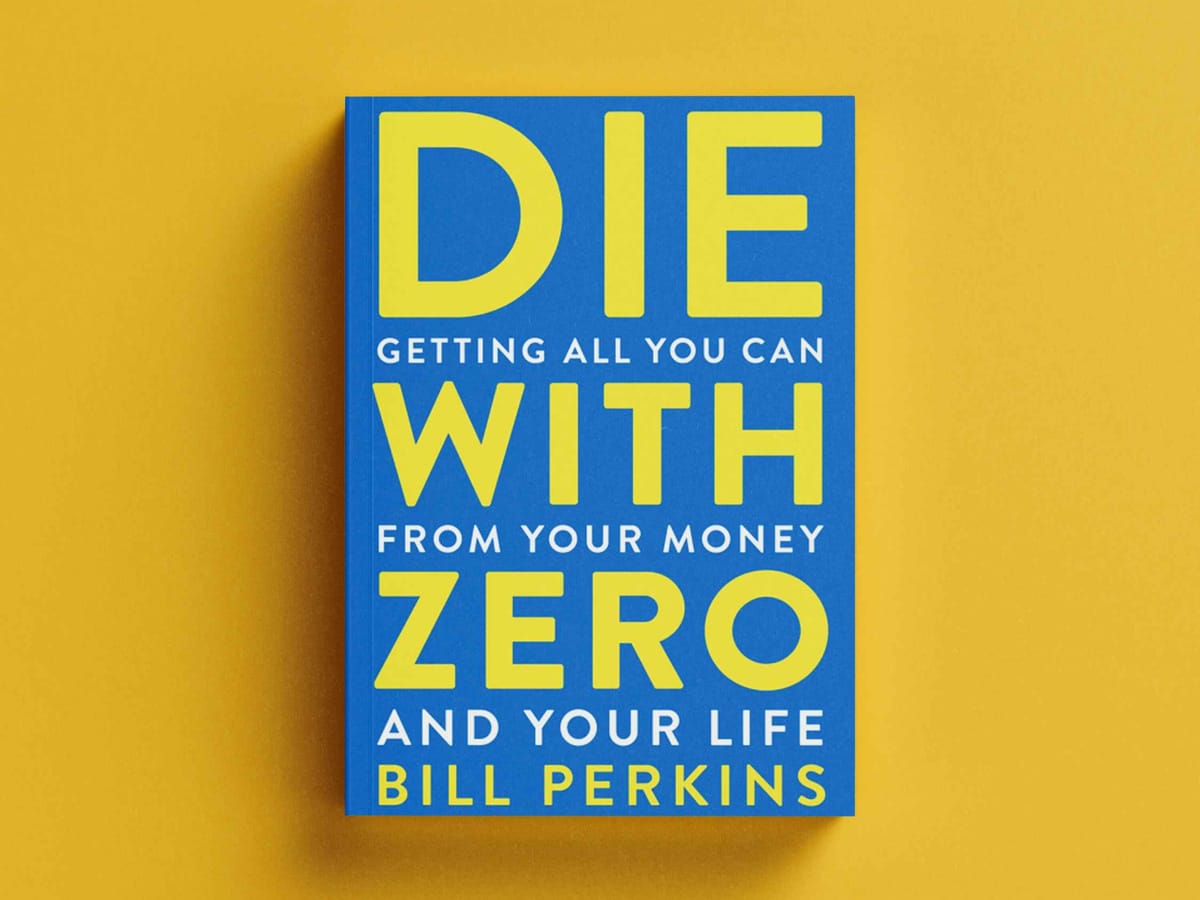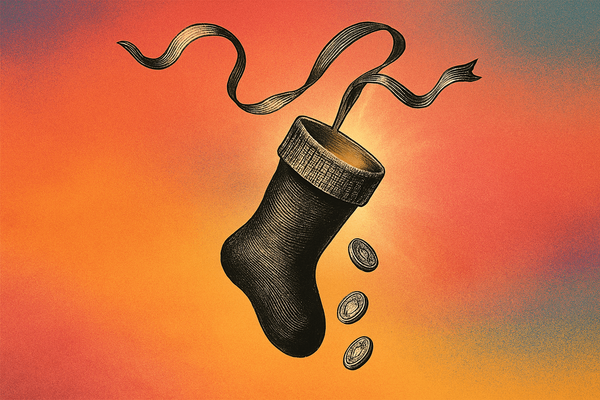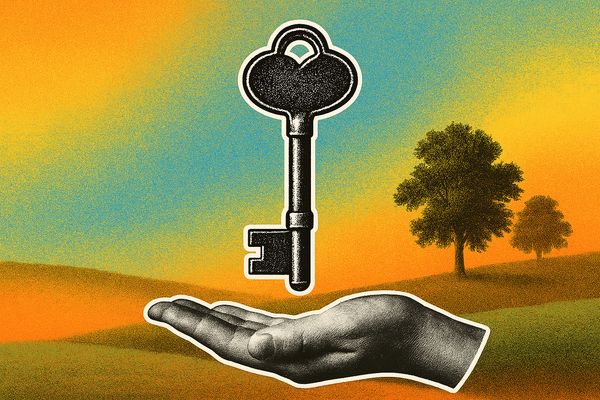How to Die With Zero - A Helpful Way to Approach Life & Money + A Workbook Guide

"Rather than just focusing on saving up for a big pot full of money that you will most likely not be able to spend in your lifetime, live your life to the fullest now: Chase memorable life experiences, give money to your kids when they can best use it, donate money to charity while you’re still alive. That’s the way to live life. Remember: In the end, the business of life is the acquisition of memories. So what are you waiting for?"
Last weekend, I powered through Bill Perkins's Die With Zero audiobook. At just over five hours, it’s a quick listen, and the print version is a manageable 240 pages. The writing could be sharper, and there’s some repetition, but the core idea is worth considering: money should be a tool for maximizing life experiences, not an end goal.
Instead of stockpiling wealth for a retirement that may never play out the way you expect, Perkins argues that it’s better to enjoy meaningful experiences throughout your life. Memories, unlike bank balances, generate compounding returns in happiness.
After I finished the book, I looked for a cheat sheet or workbook to revisit some of the central concepts of the book. And with, that this article was born.
Below, you'll find a workbook that I think ties in well with Die With Zero. Although it works best if you've read (or listened to) Die With Zero, reviewing the concepts can be valuable for everyone.
I also include some additional resources at the end of the workbook if you're looking for more articles and books on similar concepts.
Table of Contents
- Define Your Life Priorities
- Create a "Time Bucket" List
- Calculate Your "Net Fulfillment Curve"
- Embrace "The Memory Dividend"
- Avoid "Autopilot Living"
- Share the Wealth
- Reevaluate Your "Die With Zero" Plan
- Additional Resources
1. Define Your Life Priorities
Start with what actually matters. Ask yourself:
- What are my core values? (e.g., adventure, relationships, creativity)
- What are the most fulfilling experiences I want to have in my lifetime? (List at least 10 experiences, from travel destinations to personal achievements.)
- Who do I want to share these experiences with?
Clarity on these questions makes it easier to prioritize spending and time.
2. Create a "Time Bucket" List
Perkins introduces the idea of "time buckets"—categorizing life experiences by the age range when they are most rewarding. Some things lose their appeal or feasibility over time. Climbing Mount Kilimanjaro is easier in your thirties than in your sixties.
Break your life into ten-year increments and assign experiences accordingly. For example:
- 20-30: Backpack through Europe, learn a new language
- 30-40: Start a family, buy a home
- 40-50: Travel with family, focus on health and fitness
- 50-60: Pick up new hobbies, take cooking classes in Italy
Revisit this list annually to adjust for changes in interests and circumstances.
3. Calculate Your "Net Fulfillment Curve"
This concept helps determine how much to spend at different life stages to maximize happiness while avoiding both over-saving and over-spending.
- Assess your savings and expected income.
- Identify spending categories tied to experiences (travel, hobbies, family activities).
- Estimate how much funding each "time bucket" requires.
- Adjust savings and spending to balance present enjoyment with future security.
Using financial wellness tools (like Nook) can help track progress.
4. Embrace "The Memory Dividend"
A unique idea in the book is the "memory dividend", the joy of reliving past experiences. The earlier you create memories, the longer you can enjoy them.
- Prioritize experiences that will create lasting memories.
- Document them through journaling, photography, or video.
- Reflect on them regularly to relive the emotional rewards.
5. Avoid "Autopilot Living"
Routines can make life predictable, but they can also make it easy to put off meaningful experiences indefinitely. To counteract this:
- Schedule time to plan experiences every quarter.
- Set reminders to revisit your "time bucket" list.
- Seek inspiration from friends, books, or online communities to discover new experiences.
6. Share the Wealth
A key takeaway from Die With Zero is that giving money away while you’re alive has more impact than leaving an inheritance.
- Determine what you can afford to give without harming your financial security.
- Discuss your plans with your family to avoid misunderstandings.
- Make giving intentional—help with a down payment, fund a family reunion, or support a meaningful cause.
7. Reevaluate Your "Die With Zero" Plan
Life is unpredictable, and your financial and personal circumstances will change. Set a schedule to review your plan every 6-12 months.
Questions to Ask During Review:
- Am I prioritizing experiences aligned with my values?
- Have my financial goals changed?
- Are there experiences I’ve been postponing that need to happen now?
8. Additional Resources
If you enjoyed Die With Zero, we've included a few additional resources below:
- Four Thousand Weeks by Oliver Burkeman. A time management book with a similar perspective on making the most of life.
- The Canadian Retirement Income Calculator: A practical tool for estimating future income needs.
Final Thoughts
Die With Zero is ultimately a call to align spending with what truly matters, give money when it has the most impact, and avoid the regret of accumulating wealth you’ll never use.
The challenge is in the timing. Too many people delay gratification for too long, saving for experiences they will never enjoy. The goal is to avoid that trap.
If you knew exactly when you were going to die, financial planning would be easy. Since that’s not an option, the best we can do is make sure we are prioritizing the right things at the right time.
Now is a good time to start.
"The sad truth is that too many people delay gratification for too long, or indefinitely. They put off what they want to do until it’s too late, saving money for experiences they will never enjoy."





